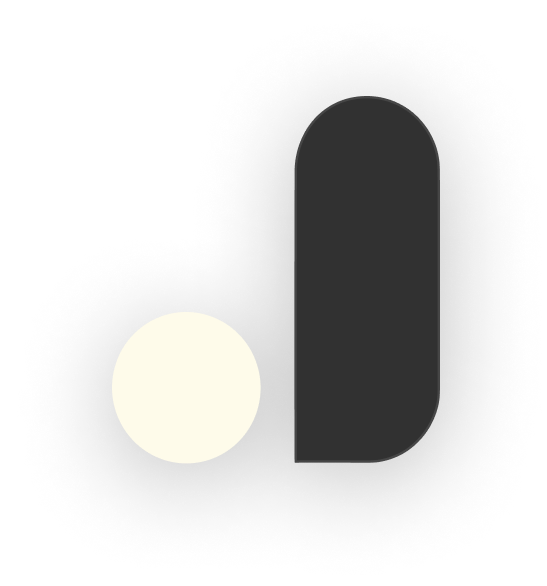AI Journaling vs. Traditional Journaling: Key Differences

Looking for the best journaling method? Here’s a quick breakdown:
- AI Journaling: Offers guided prompts, emotional analysis, and pattern detection. Great for consistency and tracking progress with features like reminders and encrypted storage.
- Traditional Journaling: Encourages creativity and deeper emotional connection through handwriting. Perfect for privacy and a distraction-free experience.
Key Comparison:
| Feature | AI Journaling | Traditional Journaling |
|---|---|---|
| Structure | Guided prompts and insights | Freestyle, self-directed |
| Consistency | Automated reminders | Personal discipline required |
| Analysis | Emotional trends detection | Manual reflection |
| Privacy | Digital encryption | Offline, physical security |
| Cost | Subscription-based | One-time material cost |
Which to choose? If you prefer structure and insights, go for AI journaling. For creativity and offline privacy, stick to pen and paper. Or, combine both for the best of both worlds - AI for morning prompts and traditional journaling for evening reflections.
Journaling Benefits - Paper vs Digital
Manual Journaling Methods
Using notebooks or digital text editors for journaling provides a simple way to reflect on your thoughts without relying on complex technology.
Strengths of Manual Journaling
Writing by hand can boost creativity and improve memory, all while offering a distraction-free space for your thoughts to flow naturally [2]. Physical journals ensure complete privacy since they remain entirely under your control, encouraging open and honest expression [3]. They also allow for personal touches like doodles, diagrams, and custom layouts, making methods like bullet journaling especially popular [2].
Limits of Manual Journaling
Despite its benefits, manual journaling has its challenges. Staying consistent can be tricky without automated reminders or prompts, requiring a lot of self-discipline [4].
Physical storage becomes a hassle over time, with the added risk of losing or damaging entries. Finding specific patterns or past entries can also get tedious as your collection grows [2].
Here’s how some journalers tackle these issues:
| Challenge | Manual Solution | Effectiveness |
|---|---|---|
| Consistency | Set a daily journaling routine | Works well when paired with habits |
| Organization | Use index pages and date entries | Moderately effective, needs upkeep |
| Searchability | Create themed sections or tags | Limited by manual effort |
| Storage | Archive journals systematically | Effective but takes up space |
While manual journaling gives you freedom and simplicity, it falls short in areas like organization and consistency. AI-powered tools are addressing these gaps, offering solutions that make journaling more efficient and manageable [2][4].
AI-Powered Journaling Tools
Manual journaling has its charm, but AI-powered tools step up the game with features that go beyond traditional methods, offering smarter insights and enhanced functionality.
Core AI Journaling Features
AI journaling tools bring a modern twist to journaling by incorporating advanced capabilities:
| Feature | Purpose | Benefit |
|---|---|---|
| Personalized Prompts | Tailored writing suggestions based on individual goals | Encourages consistent journaling habits |
| AI Analysis | Detects patterns in journal entries | Highlights recurring themes and trends |
| Encrypted Storage | Protects data with end-to-end encryption | Safeguards privacy and personal information |
| Knowledge Integration | Provides related quotes and insights for context | Enriches daily reflections with added depth |
These tools streamline the journaling process while offering a deeper understanding of personal growth and habits.
Why AI Journaling Stands Out
AI tools can uncover writing patterns and emotional trends that might go unnoticed in manual journaling, fostering greater self-awareness. That said, there are important considerations regarding data privacy. As David Nield from WIRED explains:
"By default, anything you talk to ChatGPT about could be used to help its underlying large language model (LLM) 'learn about language and how to understand and respond to it.'"
This underscores the need to select platforms with transparent data policies to ensure your personal reflections are protected.
Keeping Your Data Safe
Privacy is a top priority for AI journaling platforms. Leading tools implement robust security measures, including:
- End-to-end encryption for journal entries
- Secure storage using industry-standard protocols
- User control over data sharing preferences
For example, JournalsAI offers a 30-day personalized journaling experience with strong encryption to keep your entries confidential.
Direct Comparison: AI vs. Manual Methods
Feature Comparison Table
To choose between AI-assisted and traditional journaling, it helps to understand how they differ. Here's a breakdown of key features:
| Feature | AI-Assisted Journaling | Traditional Manual Journaling |
|---|---|---|
| Structure | Offers guided prompts and insights | Freestyle, entirely self-directed |
| Consistency | Includes reminders and a set format | Relies on personal discipline |
| Analysis | Provides automated emotional insights and pattern detection | Requires manual reflection and analysis |
| Customization | Prompts tailored by AI to match goals | Allows total creative control |
| Privacy | Protected by digital encryption | No digital footprint, relies on physical security |
| Accessibility | Usable across devices with searchable entries | Tied to physical notebooks |
| Cost | Usually subscription-based | One-time cost for materials |
| Backup | Automatically stored in the cloud | Requires manual duplication or storage |
Self-Reflection vs. AI Guidance
AI-assisted journaling can add structure and focus to your personal growth, while traditional journaling offers a more open-ended, creative experience. Here's how they differ in fostering self-discovery:
AI-Guided Reflection
AI tools help users stay on track with tailored prompts and feedback. For instance, platforms like JournalsAI craft 30-day experiences that align with individual goals, offering a more structured approach to personal growth.
Traditional Self-Reflection
Handwriting your thoughts can improve memory and emotional processing. This method encourages spontaneous creativity and provides a deeper, more personal connection with your reflections.
The decision comes down to your preference for structured support versus complete creative freedom. Both methods can be effective, and combining them might offer the best of both worlds for your journaling journey.
Selecting Your Journaling Method
Key Decision Points
Once you've compared the features, it's time to decide which journaling method works best for you. Think about your comfort with technology and how important privacy is for you. Digital tools like AI journaling offer encryption for added security, while physical notebooks guarantee complete offline privacy.
Go with AI if you're looking for insights and tracking features, or stick to traditional journaling if you value creative freedom and the experience of handwriting.
Using Both Methods Together
Why choose one when you can use both? AI journaling can provide structure, while traditional journaling allows for open-ended reflection. Here's a simple way to combine them:
| Time of Day | Method | Purpose |
|---|---|---|
| Morning | AI-Assisted | Use prompts and set daily goals |
| Evening | Traditional | Reflect deeply and express creatively |
For example, you could start your day with JournalsAI for focused, guided writing, and wind down in the evening with a notebook to capture your thoughts in a more personal way.
Method Match by User Type
Your personality and lifestyle can guide your choice. Here's how different methods align with various needs:
- Busy Professionals and Goal-Oriented Individuals: AI journaling is perfect for structured, time-saving entries, with features like reminders and progress tracking that help you stay consistent even with a packed schedule.
- Creative Types: A physical journal offers endless freedom for self-expression. The act of writing by hand can enhance creativity and deepen your connection to your thoughts.
- Privacy-Focused Users: If privacy is your top concern, traditional notebooks or secure AI platforms are your best bet.
Start by focusing on what matters most to you - whether it's convenience, creativity, or security - then experiment until you find the journaling method that feels just right.
Conclusion
AI journaling brings structured prompts, tailored guidance, and progress tracking, making it a great fit for those with tight schedules. On the other hand, traditional journaling offers a hands-on experience that encourages creativity and allows for screen-free moments of reflection.
For many, the act of physically writing in a journal creates a unique sense of connection. It can spark creativity and serve as a calming escape from digital distractions.
Blending AI-assisted tools with traditional journaling can give you the best of both worlds - practical structure combined with the freedom to express yourself however you like.
Research shows that journaling can help lower stress levels and ease symptoms of depression and anxiety [1]. The key is finding a method that you can maintain over time.
Curious about AI journaling? Platforms like JournalsAI can show you how technology might enhance your self-reflection journey. In the end, the ideal method is the one that fits your personal goals and keeps you engaged.
